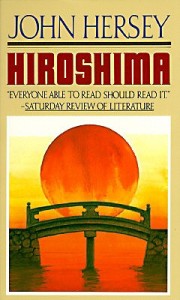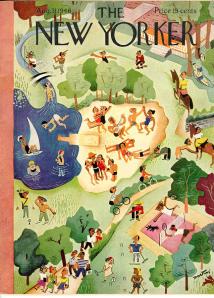I just finished browsing Stephen Jay Gould’s Time’s Arrow, Time’s Cycle: Myth and Metaphor in the Discovery of Deep Time—a marvelous book that put a lot of the thoughts that have been churning around my head lately into some sort of order, for which I owe it a debt of gratitude. In Gould’s account, Burnet, Hutton, and Lyell were driven (whether they knew it or not) by the problematic dichotomy between the notion of time as an “arrow,” or a series of unique and irreversible events that create a contingent history, and the notion of time as a “cycle,” which posits an immanent unity and inevitability such that contingency is evacuated. Gould’s project, here as in his essays on punctuated equilibrium, is to give the lie to uniformitarianism by pointing out that the uniformitarian method (under which natural laws are unchanging) has little to do with a uniformitarian account of history (under which catastrophism is dangerous nonsense): the laws, he claims, can be unchanging even if the effects suggest rupture, event, specificity.
In Gould’s account, Burnet, Hutton, and Lyell were driven (whether they knew it or not) by the problematic dichotomy between the notion of time as an “arrow,” or a series of unique and irreversible events that create a contingent history, and the notion of time as a “cycle,” which posits an immanent unity and inevitability such that contingency is evacuated. Gould’s project, here as in his essays on punctuated equilibrium, is to give the lie to uniformitarianism by pointing out that the uniformitarian method (under which natural laws are unchanging) has little to do with a uniformitarian account of history (under which catastrophism is dangerous nonsense): the laws, he claims, can be unchanging even if the effects suggest rupture, event, specificity.
So does he offer a synthesis of the two? Perhaps. More interesting, to my mind, is his underlying point that both of these models of time are, alternately, deeply comforting and deeply worrying. We want to believe that we can effect change; but we don’t want to believe that everything is chaos and contingency. We want to believe in order; but we don’t want to believe in determinism.
Gould’s work also speaks to an interest of mine that’s been ruminating for the past few months on the narration of non-linear time as a challenge to Western big-H History.
 Latour posits that the arrow of time is a particularly modern (which, for Latour, always means Western) model of history. In We Have Never Been Modern, he asks us to consider how a model of time as a spiral would disrupt such a linear narrative by suggesting, not a singular line of progress, but a growing process within which nonlinear points could speak to each other (picture a line starting from the center of a spiral and moving out; that line is posited as a new kind of historical understanding in which temporally distant events are called into new relationships). This is strongly reminiscent of Benjamin’s image of the disruption of the linearmodel of history in which events slide after each other like beads on a rosary: Latour, like Benjamin, asks us to twist if not break that rosary, to let the beads form new and nonlinear connections in the process of writing history.
Latour posits that the arrow of time is a particularly modern (which, for Latour, always means Western) model of history. In We Have Never Been Modern, he asks us to consider how a model of time as a spiral would disrupt such a linear narrative by suggesting, not a singular line of progress, but a growing process within which nonlinear points could speak to each other (picture a line starting from the center of a spiral and moving out; that line is posited as a new kind of historical understanding in which temporally distant events are called into new relationships). This is strongly reminiscent of Benjamin’s image of the disruption of the linearmodel of history in which events slide after each other like beads on a rosary: Latour, like Benjamin, asks us to twist if not break that rosary, to let the beads form new and nonlinear connections in the process of writing history.
Latour is but the latest (and not even that) in a long line of ecological thinkers to distinguish between the Western line and the non-Western cycle or spiral (though the difference between those two models bears further thought).

It gets picked up by early environmental thinkers who unfavorably contrast the line of Western history (destructive, anthropocentric, falsely assured of its own teleology) with the cycles of natural history (restorative, maternal, healing). Aldo Leopold and Edward Abbey, two key contributors to the canon of American nature writing, go out of their way to stress the cyclicality of the environments they observe, and to lament the intrusion of Western linear history into those cycles.Both author’s major works (Sand County Almanac and Desert Solitaire) are organized by cyclical metrics of time: months and seasons, placed throughout in the deep-temporal context of the many Januaries and winters, Aprils and springs, that have passed before and will continue to pass. And both authors take pains to contrast this natural cyclicality with the disruptive linear history of humankind, with its capacity to derange beyond cyclical repair: hence Abbey’s (accurate enough) lamenting of the detrimental popularization of vast natural parks that requires their transformation into well-paved little microcosms of urban civilization, and Leopold’s famous episode of an extended history told through the rings of a tree (the image is literally circular, and Leopold goes out of his way to mention and then disregard the supposed climaxes of human history—for instance, the Civil War—in order to focus on the natural and environmental events and cataclysms of the day).
Much as I enjoy reading (and look forward to teaching!) these writers, and much as I understand the advocacy reasons for marking such a temporal division between human linear history and nonhuman cyclical history, I’m even more interested in those texts that pick up on this “natural” cyclical temporality and use it to disrupt the violent line of Western history. I’m thinking in particular of Ishmael Reed’s Mumbo Jumbo, in which nonlinear temporality is deployed as a tool, if not a weapon. Reed’s novel makes use of two “natural”/nonhuman temporal models: the time of the virus, and the time of the seed. The virus does not follow the simple linear model of creation, growth, and destruction; instead, it remains present even when invisible and presumed vanquished. Its dormancy allows it to dip in and out of linear history, epitomized by the Wallflower Order, until the time is ripe for a successful infection; thus we hear over and over again that Jes Grew had a “flare-up” in the 1890s, but was put down before it came back in the 1920s (the “now” of the novel). This is developed even more in the image of the Human Seed, a trick that involves lying underground, dormant, until such time as it is expedient to resurface. Thus the closing of the novel:
People in the 60s said they couldn’t follow him. (In Santa Cruz the students walked out.) What’s your point? they asked in Seattle whose central point, the Space Needle, is invisible from time to time. What are you driving at? they would say in Detroit in the 1950s. In the 40s he haunted the stacks of a ghost library. In the 30s he sought to recover his losses like everybody else. In the 20s they knew. And the 20s were back again. Better. Arna Bontemps was correct in his new introduction to Black Thunder. Time is a pendulum. Not a river. More akin to what goes around comes around. (Locomobile rear moving toward neoned Manhattan skyline. Skyscrapers gleam like magic trees. Freeze frame.)
Those who fail to understand Papa LaBas mark their association with linear temporality in their protestations: they want to follow, they want a point, they want to drive at something. What Papa LaBas knows is that time is a pendulum, not a river; that time is a cycle, not an arrow. Time is what goes and comes around.  This inhabitation of the cyclical—of the seed, the virus, the discarded natural object—and successful breaking open of the line of Western history speaks precisely to what that history occludes: not just, as per Abbey and Leopold, the time of the natural (though certainly that too), but also the experience of those populations excluded from history through the violent racism that so often rested on a designation of some humans as more animal than human, more natural than historical. Thus the dichotomy between natural cycles and human lines of time becomes a generative site of resistance by which the integrity of the latter can be critiqued, disrupted, perhaps (à la Benjamin) exploded.
This inhabitation of the cyclical—of the seed, the virus, the discarded natural object—and successful breaking open of the line of Western history speaks precisely to what that history occludes: not just, as per Abbey and Leopold, the time of the natural (though certainly that too), but also the experience of those populations excluded from history through the violent racism that so often rested on a designation of some humans as more animal than human, more natural than historical. Thus the dichotomy between natural cycles and human lines of time becomes a generative site of resistance by which the integrity of the latter can be critiqued, disrupted, perhaps (à la Benjamin) exploded.





